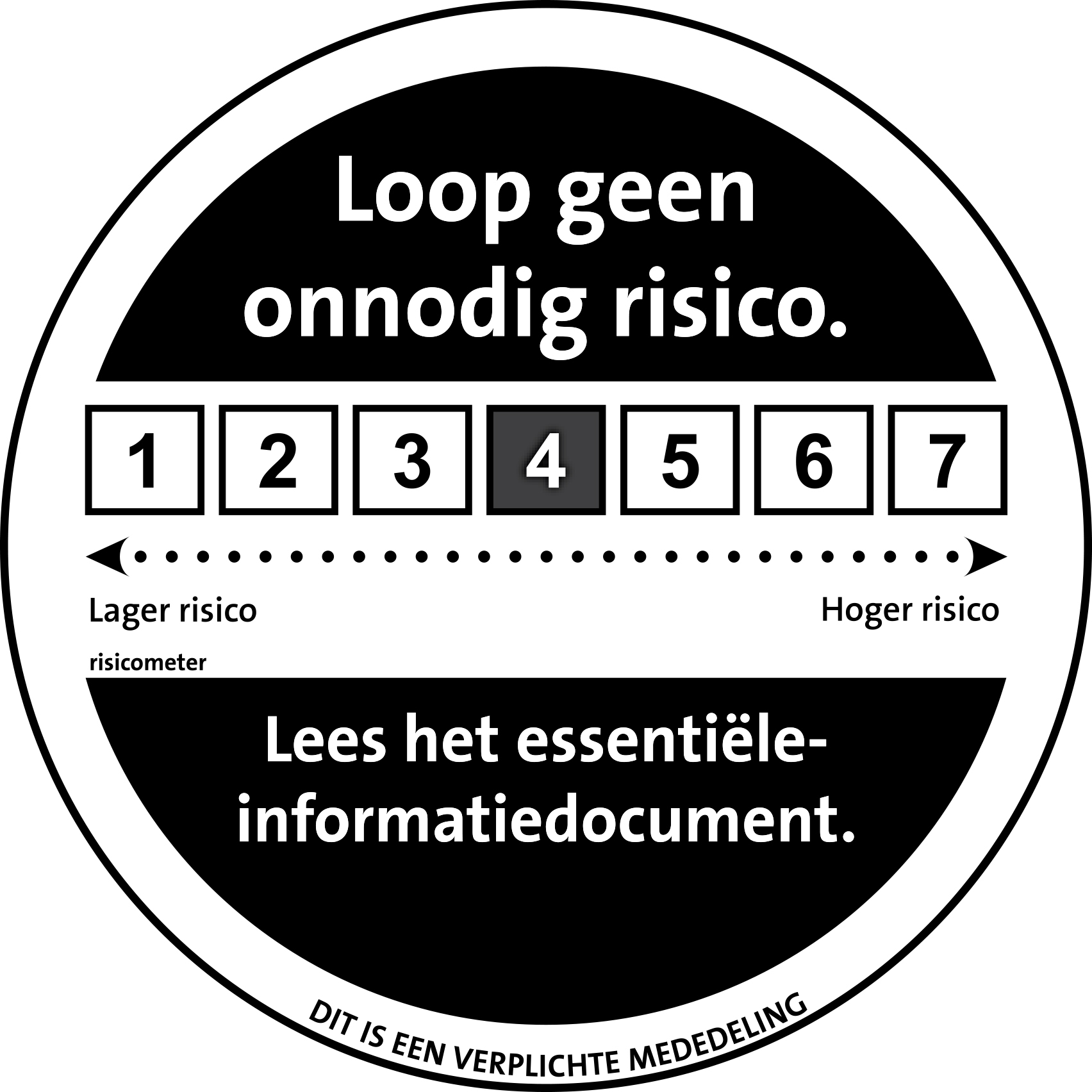Equal-Weighted Strategies: A Diversified Solution for Concentrated Markets
15 January 2025
Why Equal-Weighted Strategies Are Gaining Popularity
The MSCI World Index, a widely recognized global benchmark, illustrates the issue of concentration: its top 10 stocks, primarily US tech giants, represent more than 20% of its weight. This dominance raises questions about whether market-weighted indexes still effectively represent the broader market. Equal-weighted indexes provide a solution by assigning the same weight to every stock, reducing concentration risk and promoting diversification.
Key Advantages of Equal-Weighted Strategies
-
- Greater Diversification: Equal-weighted indexes naturally diversify across companies and sectors, stabilizing performance during volatile markets. For example, the Herfindahl-Hirschman Index1 reveals that while the MSCI World Index includes over 1,400 stocks, its “effective” number of stocks is just 104 due to concentration2. In contrast, the equal-weighted Solactive Sustainable World Equity Index, with only 250 stocks, delivers an effective count of 2463, reflecting broader diversification.
- Actual vs. Effective Number of Stocks: Demonstrates the superior diversification of equal-weighted indexes compared to market-weighted indexes, highlighting the "effective" number of stocks metric.
Source: VanEck. It is not possible to invest directly in an index.
- Actual vs. Effective Number of Stocks: Demonstrates the superior diversification of equal-weighted indexes compared to market-weighted indexes, highlighting the "effective" number of stocks metric.
- Greater Diversification: Equal-weighted indexes naturally diversify across companies and sectors, stabilizing performance during volatile markets. For example, the Herfindahl-Hirschman Index1 reveals that while the MSCI World Index includes over 1,400 stocks, its “effective” number of stocks is just 104 due to concentration2. In contrast, the equal-weighted Solactive Sustainable World Equity Index, with only 250 stocks, delivers an effective count of 2463, reflecting broader diversification.
- Exposure to Small- and Mid-Cap Companies: By treating all stocks equally, these strategies increase exposure to smaller and mid-sized companies. This taps into the “small-cap effect,” which suggests that smaller companies can outperform larger ones over the long term, particularly during periods of economic recovery.
- Contrarian Rebalancing: Equal-weighted indexes inherently rebalance by “buying low and selling high.” This contrarian approach helps mitigate the risks of market bubbles and sentiment-driven price movements, offering resilience in volatile periods.
Challenges and Considerations
- Rebalancing Costs: Regular rebalancing increases transaction costs for funds or ETFs tracking equal-weighted indexes. This can slightly reduce overall returns compared to market-weighted strategies, which require less frequent adjustments.
- Lower Exposure to Large-Cap Stocks: Equal-weighted strategies may underperform during strong bull markets dominated by large-cap companies. Investors must weigh this limitation against the long-term benefits of diversification.
- Volatility and Liquidity Risks: Increased exposure to small- and mid-cap stocks may amplify volatility and reduce liquidity for large investors. This could pose challenges for large funds attempting to align with an equal-weighted strategy.
Historical Outperformance
Equal-weighted indexes have outperformed market-weighted counterparts during several key periods:
-
- Post-Dot-Com Bubble (2000–2002): Equal-weighted S&P 500 outperformed due to its broader exposure to smaller companies that rebounded faster than large-cap tech stocks.
-
- Dot-Com Bubble Performance (2000–2002): Provides historical context for how equal-weighted strategies benefited from a more balanced approach during a challenging market period.
Source: Bloomberg. Past performance does not predict future returns. It is not possible to invest directly in an index.
- Dot-Com Bubble Performance (2000–2002): Provides historical context for how equal-weighted strategies benefited from a more balanced approach during a challenging market period.
-
- Recovery from the Global Financial Crisis (2009–2013): The balanced exposure of equal-weighted indexes facilitated stronger performance compared to their market-weighted peers, which were heavily skewed toward the slower-recovering financial sector.
- Post-Global Financial Crisis Recovery (2009–2013): Visualizes how equal-weighted indexes outperformed market-weighted ones by avoiding sectoral concentration, like the financial sector.
Source: Bloomberg. Past performance does not predict future returns. It is not possible to invest directly in an index.
- Post-Global Financial Crisis Recovery (2009–2013): Visualizes how equal-weighted indexes outperformed market-weighted ones by avoiding sectoral concentration, like the financial sector.
- Post-Dot-Com Bubble (2000–2002): Equal-weighted S&P 500 outperformed due to its broader exposure to smaller companies that rebounded faster than large-cap tech stocks.
Stability During Volatile Markets
Research highlights that equal-weighted strategies can stabilize performance during market downturns. For instance, during the 2020 COVID-19 crash and subsequent recovery, the VanEck World Equal Weight Screened UCITS ETF exhibited lower volatility compared to market-weighted strategies, as measured by rolling standard deviation.
Twelve-Month Rolling Standard Deviation: Demonstrates that equal-weighted strategies (e.g., the VanEck World Equal Weight Screened UCITS ETF) had lower volatility compared to market-weighted indexes during recent crises(COVID-19 Crash).

Source: Morningstar Direct. Past performance does not predict future returns. It is not possible to invest directly in an index.
Equal-Weighted Indexes: A Solution for Market Imbalances
Equal-weighted investment strategies offer a valuable alternative to traditional market-weighted approaches, particularly in an environment of concentrated equity markets. While they come with trade-offs, such as rebalancing costs and potential underperformance during large-cap bull runs, their diversification benefits and resilience during volatile periods make them a worthy consideration for many investors. As markets continue to evolve, these strategies provide a balanced approach to navigating today’s complex investment landscape.
This article is part of a broader Whitepaper on Equal Weight Investment. See our publications for further details.
1 Source: Glossary:Hirschman Index Herfindahl Hirschman Index (HHI) - Statistics Explained.
2 Source: VanEck.
3 Source: VanEck.
IMPORTANT INFORMATION
This is a marketing communication. Please refer to the prospectus of the UCITS and to the KID before making any final investment decisions. This information originates from VanEck (Europe) GmbH, which has been appointed as distributor of VanEck products in Europe by the Management Company VanEck Asset Management B.V., incorporated under Dutch law and registered with the Dutch Authority for the Financial Markets (AFM). VanEck (Europe) GmbH with registered address at Kreuznacher Str. 30, 60486 Frankfurt, Germany, is a financial services provider regulated by the Federal Financial Supervisory Authority in Germany (BaFin).
The information is intended only to provide general and preliminary information to investors and shall not be construed as investment, legal or tax advice VanEck (Europe) GmbH and its associated and affiliated companies (together “VanEck”) assume no liability with regards to any investment, divestment or retention decision taken by the investor on the basis of this information. The views and opinions expressed are those of the author(s) but not necessarily those of VanEck. Opinions are current as of the publication date and are subject to change with market conditions. Certain statements contained herein may constitute projections, forecasts and other forward-looking statements, which do not reflect actual results. Information provided by third party sources is believed to be reliable and have not been independently verified for accuracy or completeness and cannot be guaranteed. Brokerage or transaction fees may apply.
VanEck Asset Management B.V., the management company of VanEck World Equal Weight Screened UCITS ETF (the "ETF"), a sub-fund of VanEck ETFs N.V., is a UCITS management company incorporated under Dutch law and registered with the Dutch Authority for the Financial Markets (AFM). The ETF is registered with the AFM, passively managed and tracks an equity index. Investing in the ETF should be interpreted as acquiring shares of the ETF and not the underlying assets.
Investors must read the sales prospectus and key investor information before investing in a fund. These are available in English and the KIIDs/KIDs in certain other languages as applicable and can be obtained free of charge at www.vaneck.com, from the Management Company or from the following local information agents:
Austria - Facility Agent: Erste Bank der oesterreichischen Sparkassen AG
Germany - Facility Agent: VanEck (Europe) GmbH
Spain - Facility Agent: VanEck (Europe) GmbH
Sweden - Paying Agent: Skandinaviska Enskilda Banken AB (publ)
France - Facility Agent: VanEck (Europe) GmbH
Portugal - Paying Agent: BEST – Banco Eletrónico de Serviço Total, S.A.
Luxembourg - Facility Agent: VanEck (Europe) GmbH
The S&P 500 Index (“Index”) is a product of S&P Dow Jones Indices LLC and/or its affiliates and has been licensed for use by Van Eck Associates Corporation. Copyright © 2020 S&P Dow Jones Indices LLC, a division of S&P Global, Inc., and/or its affiliates. All rights reserved. Redistribution or reproduction in whole or in part are prohibited without written permission of S&P Dow Jones Indices LLC. For more information on any of S&P Dow Jones Indices LLC’s indices please visit www.spdji.com. S&P® is a registered trademark of S&P Global and Dow Jones® is a registered trademark of Dow Jones Trademark Holdings LLC. Neither S&P Dow Jones Indices LLC, Dow Jones Trademark Holdings LLC, their affiliates nor their third party licensors make any representation or warranty, express or implied, as to the ability of any index to accurately represent the asset class or market sector that it purports to represent and neither S&P Dow Jones Indices LLC, Dow Jones Trademark Holdings LLC, their affiliates nor their third party licensors shall have any liability for any errors, omissions, or interruptions of any index or the data included therein. It is not possible to invest directly in an index.
All performance information is based on historical data and does not predict future returns. Investing is subject to risk, including the possible loss of principal.
No part of this material may be reproduced in any form, or referred to in any other publication, without express written permission of VanEck.
© VanEck (Europe) GmbH
Important Disclosure
This is a marketing communication. Please refer to the prospectus of the UCITS and to the KID before making any final investment decisions.
This information originates from VanEck (Europe) GmbH, which has been appointed as distributor of VanEck products in Europe by the Management Company VanEck Asset Management B.V., incorporated under Dutch law and registered with the Dutch Authority for the Financial Markets (AFM). VanEck (Europe) GmbH with registered address at Kreuznacher Str. 30, 60486 Frankfurt, Germany, is a financial services provider regulated by the Federal Financial Supervisory Authority in Germany (BaFin).
The information is intended only to provide general and preliminary information to investors and shall not be construed as investment, legal or tax advice VanEck (Europe) GmbH, VanEck Switzerland AG, VanEck Securities UK Limited and their associated and affiliated companies (together “VanEck”) assume no liability with regards to any investment, divestment or retention decision taken by the investor on the basis of this information. The views and opinions expressed are those of the author(s) but not necessarily those of VanEck. Opinions are current as of the publication date and are subject to change with market conditions. Certain statements contained herein may constitute projections, forecasts and other forward-looking statements, which do not reflect actual results. Information provided by third party sources is believed to be reliable and have not been independently verified for accuracy or completeness and cannot be guaranteed. Brokerage or transaction fees may apply.
All performance information is based on historical data and does not predict future returns. Investing is subject to risk, including the possible loss of principal.
No part of this material may be reproduced in any form, or referred to in any other publication, without express written permission of VanEck.
© VanEck (Europe) GmbH / VanEck Asset Management B.V.
Sign-up for our ETF newsletter
Related Insights
12 February 2025
07 February 2025
16 January 2025
16 January 2025
16 January 2025




